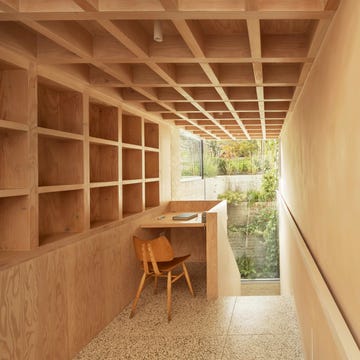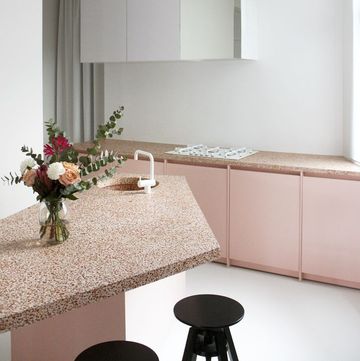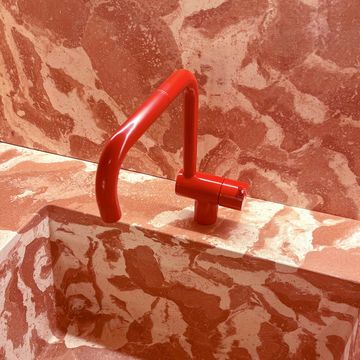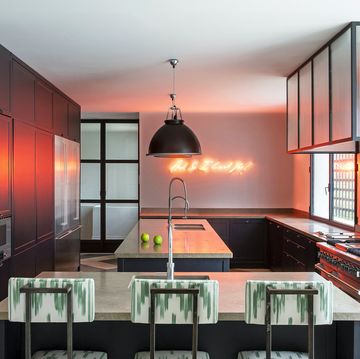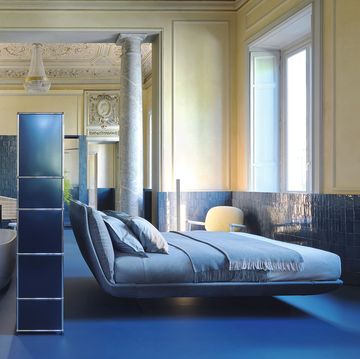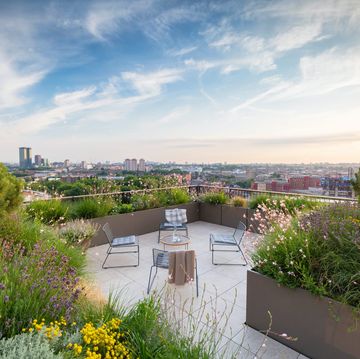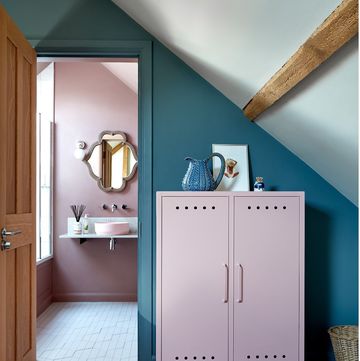Cross-laminated timber, or CLT as it’s better known, is no ordinary wood. This clever material is formed of multiple layers of structural lumber, stacked in alternating directions and pressure-glued. This produces huge, dense wooden slabs that are comparable in strength to steel or concrete, considerably lighter, and can be manufactured in almost any shape or size.
CLT has been used in construction for more than two decades, primarily for large-scale housing and office developments. But amid growing concerns about sustainability, architects are now exploring its benefits on a smaller, more residential scale. Most CLT comes from managed forests in Austria and Germany, so it can be used to build homes with extremely low carbon footprints, formed of components that could one day be reused or recycled.
A big advantage of this material lies in its creation of interiors that don’t need any additional finishing. As long as the wood is treated with a fire-retardant coating – a requirement of UK building regulations – it can be left exposed.
What's everyone reading?
Studies have shown that being surrounded by wood can reduce blood pressure, heart rate and stress levels, and improve a person’s emotional state, so the potential wellbeing benefits of this style of interior are enormous. It’s not just about the sight and feel of the material; it also offers a smell that is uniquely comforting.
Tikari Works chose CLT when designing 10 new apartments in Peckham, south London. Acting as both architect and developer, the London-based studio split the homes across a pair of buildings featuring playful details that would have been too expensive to achieve with any other structural material, including windows that span the junction between the walls and the roof.
‘Because the CLT frame is produced in the factory, there is a much wider scope of shapes and forms that you can produce without adding cost,’ says architect Ty Tikari. Another benefit he points out is that CLT interiors are more robust and forgiving than typical plastered walls. ‘If you need to fill a hole, you can do it very discreetly,’ he says.
The walls of CLT-framed buildings are completely solid – there is no cavity, unlike brick or steel-framed structures. This means all channels for pipes and wires must be pre-drilled in the factory, rather than added later. This speeds up the construction time on-site, but it also means the architectural plans need to be highly precise.
‘It requires you to think a few stages ahead,’ says architect Marshall Blecher, who recently worked on the CLT-framed Villa Korup in Denmark. The effect is worth it, he says. ‘You can feel the warmth and solidity of the walls a lot more than in a regular timber-framed house.’
The cost-specific nature of CLT is what attracted architecture studio Dallas-Pierce- Quintero to use the material for Forest Houses, a group of three new-build homes in Wanstead, east London. It is not the cheapest material around, but the prefabrication process means that the cost is relatively fixed before building work starts.
The same was the case for young practice Unknown Works, which opted for CLT on a house extension in Wanstead to ensure the project wouldn’t go over budget. To get even better value for money, the architects turned material offcuts into furniture, light switches and a front door. ‘At this scale, you can really experiment and get a lot out of the material,’ says architect Theo Games Petrohilos.
Tips for success
Convinced of CLT’s charms? Here’s what to know before you embark on a build
Plan carefully It’s a lot harder to fix issues after your CLT panels have been produced and delivered, so it’s important to be accurate and plan all the necessary cuts from the outset. Make sure there’s enough space for electrics and service pipes, and allow tolerance in case the panels don’t fit together exactly as expected.
Choose the right wood CLT is typically made from spruce, which comes in a range of grades. It makes sense to invest in higher-quality grades in the most visible areas, particularly those at eye level, while lower-quality timber can be specified elsewhere to keep costs down.
Make the most of the material Take advantage of CLT’s high strength for wide spans, enabling the building of large living spaces that aren’t interrupted by columns. It’s also possible to create niches within the wood, providing useful nooks that can be used for storing or displaying objects.








